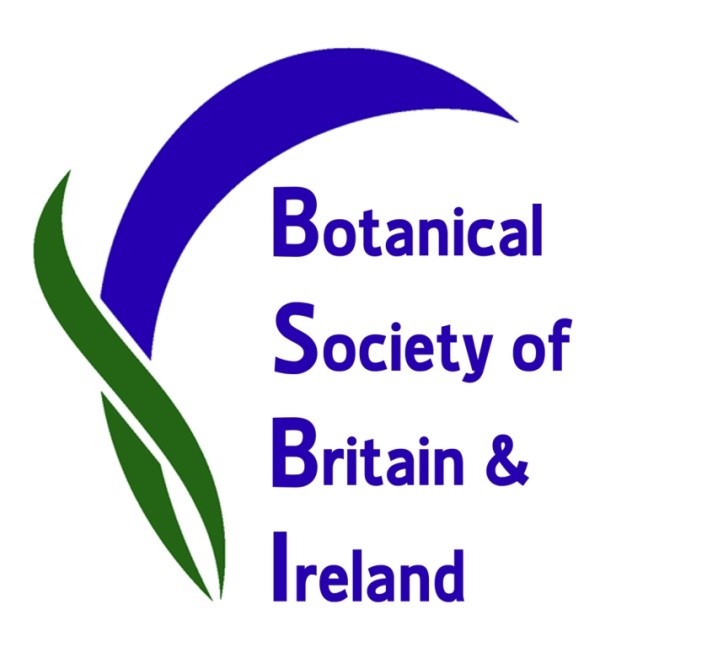Dumfriesshire Botany Group at Duncow Estate, 1st June 2023
The group had the opportunity to visit and record in the Duncow Estate by kind invitation of Yvonne Clark and her family. They are in the process of refurbishing the Estate with a view to accommodating nature while maintaining the existing features of mature woodlands and specimen trees, wetlands and parkland. The variety of habitats meant that a full day was spent in looking at some of these areas.
In an attempt to provide useful information to the owners we recorded on the estate within the OS map monads. This means there are 3 separate lists of plants for roughly equal areas of the estate. In NX9683 there are the main house, walled garden and surrounds. In NX9783 the main area has some magnificent specimen trees and some grasslands. In NX9782 the lower part of the estate includes the main lochan and wet woodland areas.
Eight of us met on a fine day and headed first for the lower part of the estate. In an estate with a long history of planting it was not surprising that we were constantly distracted by either large specimen trees or non native species that were spreading themselves around. One of the first things that stood out was the abundant flowering of red Candelabra primrose Primula japonica. This was all along the paths where the dappled shade and damp ground clearly suited it. We also saw Butchers Broom Ruscus aculeatus spreading itself around. In the southern part of the Estate the there are areas of natural wet woodland and plantation. Some very big Scots Pine Pinus sylvestris are present here. The natural woodlands are mostly Downy Birch Betula pubecens and the willows, Sallow Salix cinerea ssp oleifolia and Eared Willow Salix aurita. The understory is particularly liked by ferns including Broad Buckler Dryopteris dilatata, Male-fern Dryopteris filix-mas, Scaly Male-fern Dryopteris affinis and Lady Fern Athyrium felix-femina. These are typical of low nutrient conditions. An indication of that was the mats of Sphagnum moss acting as a sponge and helping slow water movement. Growing in the Sphagnum there was also Narrow Buckler-fern Dryopteris carthusiana which is more of a moorland species. This area is criss-crossed by ditches and along these we saw clumps of Hemlock Water-dropwort Oenathe crocata, Gypsywort Lycopus europaeus and Water Forget-me-not Myosotis scorpioides. Down in the wettest area there is a good development of Tussock Sedge Carex paniculata, in a not so common fen community which is always nice to find.
After taking lunch in a clearing we had a look at the plants growing in and around the lochan. New plants for our list included White Waterlily Nymphaea alba, Water Horsetail Equisetum fluviatile, the two sedges that occur around a lot of Scottish lochs where there is medium nutrient status, Bottle Sedge Carex rostrata and the less common Bladder Sedge Carex vesicaria. In the shallower water at the north end of the loch there was a growth of Pond Water-crowfoot Ranunculus peltatus in full display with its white flowers. In a sign of good water quality we found Smooth Stonewort Nitella flexilis var flexilis. Stoneworts normally require unpolluted water where light can penetrate to a good depth. The grassland adjacent to the lochan looked like it had been recently reseeded. We were surprised to find a lot of Rat’s-tail Fescue Vulpia myuros in the sward. This is a grass we encounter very infrequently.
In the NX9783 square there are some impressive specimen trees including huge Noble Fir Abies procera and European Silver Fir Abies alba. There are also large Pedunculate Oaks Quercus robur and Sweet Chestnut Castanea sativa. The latter was also seeding itself which is not something we see often in the county. Horse Chestnut Aesculus hippocastanum was doing the same thing so southern European trees like the conditions. We had a quick look at the grassland but did not have time to search it thoroughly. It is somewhat improved to produce more silage or hay and so lacks many herbs among the more productive grass. Nearer the old site of Duncow House the grassland has Yellow Rattle Rhinanthus minor. This is a plant that is typical of older less productive grassland but may be absent from the main fields.
In the final square NX9683 the woodland planting continued to entertain our powers of observation. We puzzled over a large leaved beech deciding that it was American Beech Fagus grandifolia. Under the trees it was nice to see the woodland plants Enchanter’s-nightshade Circaea lutitiana and Wood Millet Milium effusum. Near the house the steep bank sown with wild flowers was slowly developing a sward. It has Yellow Rattle, Mouse-ear-hawkweed Pilosella officinarum, Common Cat’s-ear Hypochaeris radicata, Winter-cress Barbarea vulgaris and a bit of Oxeye Daisy Leucanthemum vulgare. The key here is keeping nutrient levels low to avoid a thick growth of a few grasses. Some open soil is also valuable to insects like solitary bees on such a sunny bank. As a post visit update Yvonne Clark sent a picture of the bank looking much more flowery by mid June as shown below.
Around the built environment on paths and walls we found a number of plants like Trailing St John’s-wort Hypericum humifusum, Slender Parsley-piert Aphanes australis and in the sawmill yard American Speedwell Veronica peregrina. The latter is as yet known from less than 10 places in Dumfriesshire. On the walls of the garden the Wall Rue Asplenium ruta-muraria, Maidenhair Spleenwort Asplenium trichomanes ssp quadrivalens and Marjoram Origanum vulgare were added to the list. There was a great display of Bluebell Hyacinthoides non-scripta on the wooded tump below the sawmill. Only a quick look was possible in the parkland. Again the fields are relatively species poor improved grasslands. They could be enriched in a few places if this was ever desired by introducing a few herbs typical of traditional hay meadows.
Chris Miles
BSBI county recorder for Dumfriesshire VC73 – see bsbi.org/dumfriesshire

